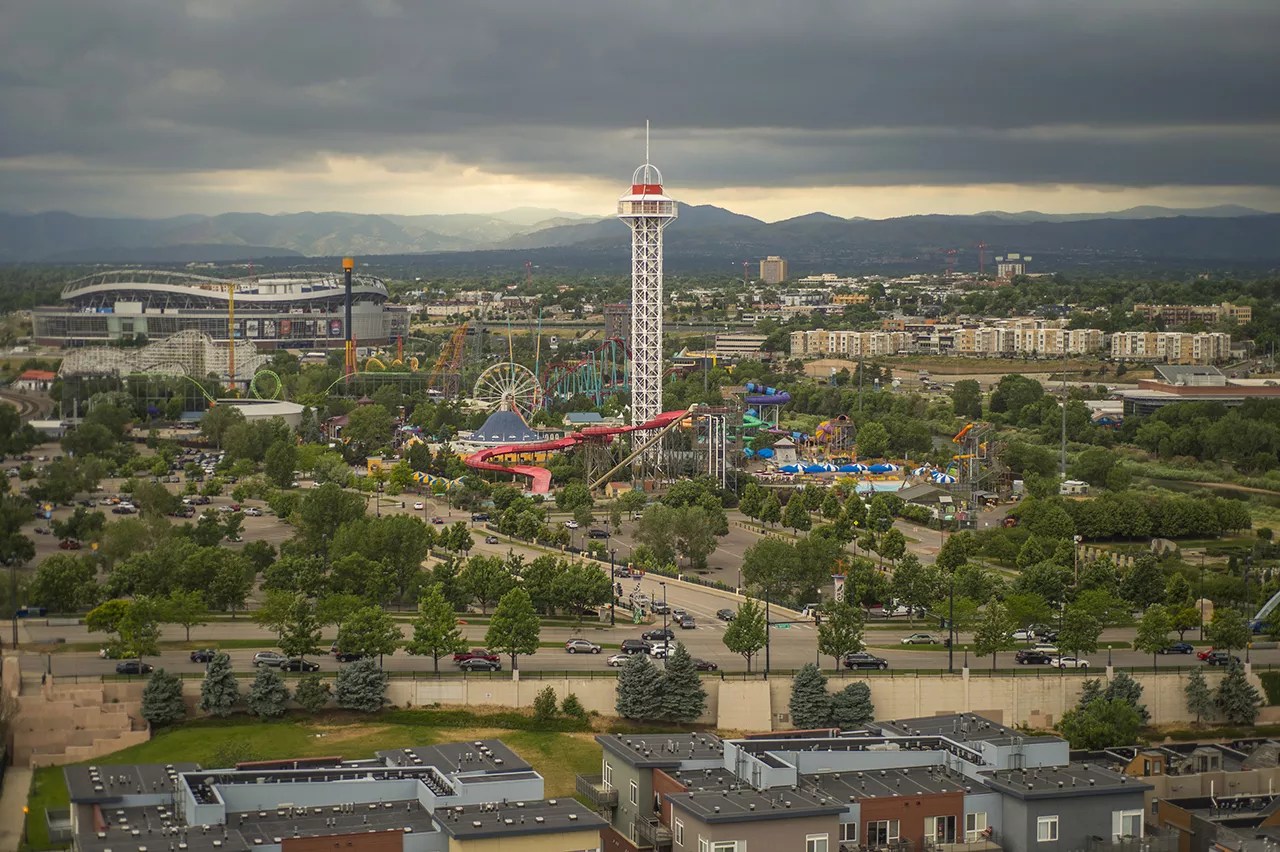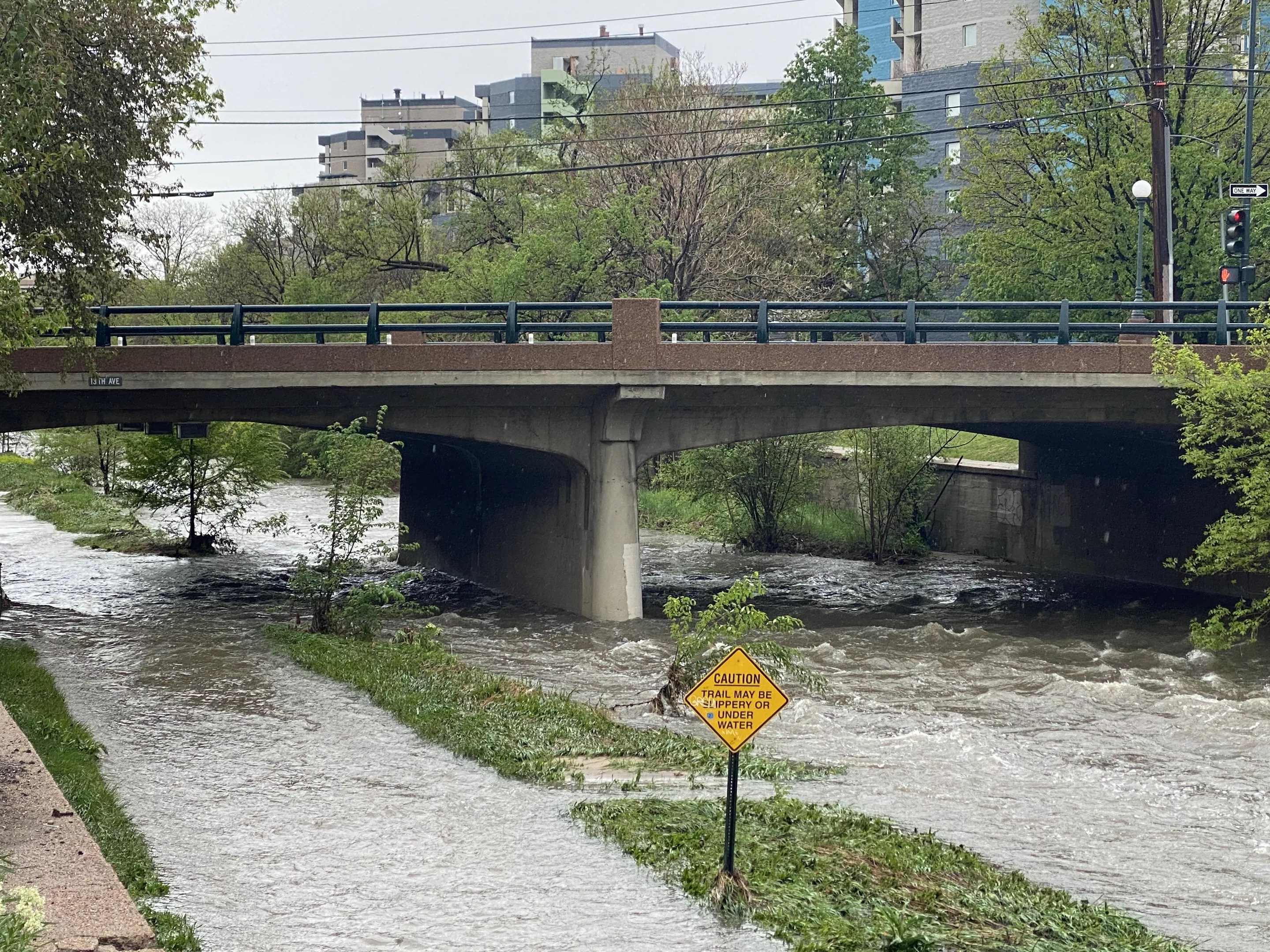
Evan Semón

Audio By Carbonatix
On May 8, just two days before Denver got walloped by torrential rains and flooding, the city signed a new agreement partnering with the U.S. Army Corps of Engineers that will help restore parts of the South Platte River and lessen the impact of future storms on trails and streets.
The Army Corps of Engineers issued a recommended plan for restoration of the South Platte in its April 2019 Environmental Impact Statement, saying: “This project presents a unique opportunity for the Corps of Engineers to partner with an extremely dedicated sponsor to restore a highly degraded river that would provide a significant boost in nationally significant habitat and habitat connectivity, while also providing flood risk reduction to hundreds of structures within both the Harvard and Weir Gulch Communities.”
Four years later, on April 24, the Waterway Resiliency Program was approved by Denver City Council with $350 million in federal funding appropriated to the project. Construction was authorized under the 2020 Water Resource Development Act at a cost of $550 million.
But before that partnership begins its eventual steps toward river restoration, the River Mile development is set to restore the part of the South Platte under its purview – likely using its own money.
Denver, make your New Year’s Resolution Count!
We’re $17,500 away from our End-of-Year campaign goal, with just a five days left! We’re ready to deliver — but we need the resources to do it right. If Westword matters to you, please contribute today to help us expand our current events coverage when it’s needed most.
The River Mile is a partnership between Revesco Properties and Kroenke Sports and Entertainment that will eventually develop a massive retail and residential neighborhood along the South Platte River starting at Confluence Park and going south. It will protect the area from a 200-year flood in the process.
“We’re constantly trying to bang the drum that we’re not just doing this to fix the floodplain,” says Evan Kurtis, construction manager for Revesco Properties. “If that was the case, we would be doing it a much cheaper way.”
Just fixing the floodplain by adding additional pipes to move water out of the area would cost about $20 million, Kurtis estimates. Instead, the River Mile is investing $130 million into restoring its part of the river, which covers reach 5 of the South Platte – from Confluence Park to Colfax Avenue, approximately. The broader Denver and Army Corps of Engineers partnership will cover reaches 1 through 6 of the river, from Sixth Avenue to 58th Avenue.
Kurtis says that Revesco and KSE have worked closely with the city – particularly the Department of Transportation and Infrastructure – and the Army Corps of Engineers to be sure its river restoration will check every box. While he expects the River Mile will inquire about getting some of the federal funding, Kurtis says it still plans to fund the project independently.
“If you’re the government, you’re thinking, ‘This is already funded,'” he notes. “Why would we go and just put the money into developers’ pockets?”
Plus, Kurtis says, the River Mile has never wanted to wait for the bureaucratic process to get going, deciding years ago that it would be responsible for river restoration in the vicinity of the project.
“It’s the right way to solve our issue while still doing the public benefit,” he says of the choice. “We want to restore the river because it’s good for the river, but it also makes it an enjoyable place for people to be. That’s our business, building buildings with people in mind.”

The Cherry Creek Trail flooded during Denver’s most recent rainstorm. A new partnership will help lessen the chance for flooding on Denver’s streets and trails.
Chris Perez
Based on the EIS, the River Mile team knew it had to put the river first to do its business.
“Aquatic habitats have also been severely degraded by altered flow and sediment regimes, channelization, additions of grade control drop structures, and other modifications,” the EIS says. “In addition to the aforementioned national significance, the South Platte River has very high public significance and recognition locally.”
As Kurtis explains it, the River Mile development recognizes that significance. Its goal is to orient people toward the rare amenities the river offers. According to the EIS, within metro Denver, wetland habitat is currently sparse, even along the South Platte, and the restoration project is needed to fix that issue.
Nancy Kuhn, marketing and communications manager for DOTI, says developments like the River Mile will work in tandem with the Waterway Resiliency Program. “Both projects will do great things for the South Platte River,” she says. “This work will help make the South Platte a new ‘front door,’ giving Denver’s neighborhoods and communities a vibrant and active riverfront.”
Along with the River Mile, the Denver Housing Authority redevelopment of Sun Valley and another KSE plan to redevelop the area around Ball Arena will also benefit from the river improvements.
“For many years, which was common around the country during industrialization, rivers supported industrial uses which inflicted damage to the rivers and adjacent communities,” Kuhn says. “What both Denver and River Mile will be doing is restoring the river to a more natural state, keeping flooding out of neighborhoods and creating a wonderful public asset.”
The River Mile will do that before the city gets going with its portion of the project, almost like a test pilot, Kurtis says. It will make habitat improvements to help fish, birds and vegetation thrive,- as well as encourage public recreation while reducing flood damages.
“The health of the river desperately needs our help, not just because of what you’d expect with man-made pollution, but just because it’s a natural river flowing through a manmade development of a city,” Kurtis explains.
That’s why part of the project will slightly reshape the path of the river from its current alignment. Rivers don’t naturally go in a straight line that’s convenient for city development, so Denver has forced the South Platte into an unnatural path over the years.

The River Mile development plans to start restoring the South Platte this year.
Courtesy of River Mile Denver
“We’re reshaping the meander to a more natural meander,” Kurtis says. “The reason is to improve the longevity of the river so the channel and the river aren’t fighting each other.”
When the channel and the river fight, as they do now, erosion gradually makes changes over time that will necessitate re-channeling of the river. It’s hoped that reshaping now will lessen the need for re-channeling and keep development along the river more stable.
The result will make the river about eight feet deeper on average, too, because the project will clear out sediment that has been trapped over the years by man-made dams. That will also make the river better for fish and anglers.
“In the river, we’ll dig out pools for fish,” Kurtis says. “We’re going to provide more shade via the vegetation trees. One of the intended outcomes is to lower the temperature of the river. At full buildout of the development, more shade and buffers lower temperatures; the fish like that.”
There will be fishing spots in the final development, which will include heat recovery systems to lower the temperature of any water from the River Mile that ends up back in the South Platte. It will also have water reuse systems to lessen the water requirements of the area.
The river restoration project doesn’t have a definitive start date, but Revesco is targeting this fall to break ground. It will be a two-year project once everything is up and running.
Though floods like the ones seen on Thursday and Friday around Denver might prevent people from using the South Platte River Trail, the River Mile won’t. It has committed to having at least one side open during the entire construction project, according to Kurtis.
“The whole goal of the project is to get people down to the river and enjoying a healthy river,” he concludes. “I feel very fortunate to be working on such a transformative, important project for the city.”